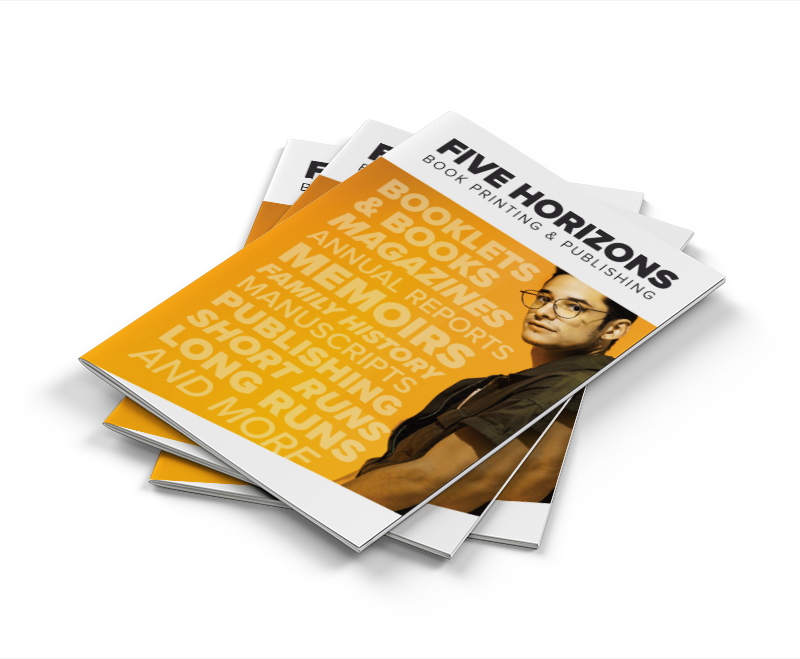






Self publishing books has revolutionized the world of book publishing, empowering authors to take control of their own journey. With this newfound freedom, however, comes the responsibility of ensuring the quality of their self-published works. In this article, we will explore some essential quality control tips that authors should consider when embarking on their self-publishing journey.
The self-publishing journey can be a rewarding and empowering experience for authors. It allows them to retain complete control over their work, from writing to distribution. When you self publish a book, it provides several advantages that make it an attractive option for authors.
“Self-publishing allows authors to take charge of their own destiny and navigate their own success.” – Jane Smith, self-published author
One of the key advantages of self-publishing is the complete control it offers authors. Traditional publishing routes often involve relinquishing creative freedom and decision-making power to publishers and editors. Self-published authors have the freedom to make all the important choices, including book formatting, cover design, pricing, and marketing strategies.
Moreover, self-publishing eliminates the need to wait for acceptance or rejection from traditional publishers. Authors can bypass the lengthy submission process and take their work directly to the readers. This not only saves time but also allows them to establish a direct connection with their audience.
Self-published authors also have the advantage of retaining a higher percentage of their book’s earnings. Traditional publishing often involves hefty royalties given to publishers and agents. With self-publishing, authors have the opportunity to earn a greater share of the revenue generated by their book sales.
Furthermore, the self-publishing process is becoming increasingly accessible due to advancing technologies and the rise of online platforms. Authors can easily format and upload their books as e-books or print-on-demand copies, making it easier to reach a global audience.
In conclusion, embracing the self-publishing journey provides authors with the ability to retain complete control over their work, realize creative visions, and establish direct connections with readers. The advantages of self-publishing, such as complete control, direct access to the market, higher earnings potential, and accessibility, make it an attractive option for authors who are seeking independence and creative freedom.

While self-publishing offers authors complete control, professional support can greatly enhance their publishing journey. Navigating the publishing process can be overwhelming, but with the right assistance, authors can ensure the quality and success of their self-published books.
Hybrid publishing services provide a unique blend of traditional and self-publishing, offering authors a range of benefits. These services combine the expertise and resources of a traditional publishing house with the creative control and flexibility of self-publishing. By collaborating with a hybrid publisher, authors gain access to professional editing, design, distribution, and marketing services, while retaining ownership of their work.
Author services cater to the specific needs of self-published authors, offering a wide range of assistance throughout the publishing process. These services can include editing, proofreading, cover design, formatting, and marketing support. Utilising author services allows authors to enhance the quality of their books, ensuring they meet professional standards and stand out in the crowded book market.

Self publishing education provides authors with the knowledge and skills required to navigate the complex publishing landscape. It is important for authors to identify credible sources of self-publishing education to ensure they receive accurate and up-to-date information. Online courses, workshops, and industry conferences are excellent resources for authors to learn about book marketing, promotion, copyright, distribution, and other essential aspects of self-publishing.
By accessing hybrid publishing services, utilising author services, and seeking credible self-publishing education, authors can navigate the publishing process with confidence and achieve their publishing goals.
Editing plays a crucial role in ensuring the quality of self-published books. When it comes to being able to self publish, authors have complete control over their work, from the writing process to the final product. However, this freedom also comes with the responsibility of ensuring that the book is polished and error-free.
One of the most important steps in the editing process is selecting the right editor. An experienced and qualified editor can provide valuable feedback, identify inconsistencies, and help authors improve the overall structure and flow of their book. When choosing an editor, it’s essential to consider their expertise in the specific genre or topic of the book, as well as their editing style and communication skills.
There are different levels of editing that authors can opt for, depending on their needs and budget. A manuscript critique provides a high-level analysis of the book, focusing on aspects such as plot, character development, and pacing. This feedback can help authors identify areas for improvement and refine their storytelling. On the other hand, a comprehensive edit goes beyond the critique and delves into the details of the manuscript, addressing issues such as grammar, punctuation, and sentence structure.

In addition to editing, proofreading is a vital step in the self-publishing process. Proofreading ensures that the final version of the book is free from errors and typos. It involves carefully reviewing the text for any spelling or grammar mistakes, as well as formatting inconsistencies. A thorough proofread can greatly enhance the professionalism and readability of the book, leaving readers with a positive impression.
| Editing Process | Benefits |
|---|---|
| Choosing the Right Editor | Access to professional expertise and guidance |
| Manuscript Critique | Identification of plot and character development issues |
| Comprehensive Edit | Refinement of sentence structure and grammar |
| Proofreading | Error-free and polished final product |

The cover design of a book is the first impression that readers will have. It is crucial for self-published authors to focus on perfecting the design of their book covers. A visually appealing and professional cover design can capture the attention of potential readers and make them more likely to pick up the book.
When designing a book cover, authors should consider the genre, target audience, and overall theme of their book. The cover should not only reflect the content of the book but also convey the tone and style of writing.
The design process for a captivating book cover involves several important elements:
By paying attention to these aspects of cover design, self-published authors can create visually stunning and attention-grabbing book covers that make a memorable first impression on readers. A well-designed cover can increase the chances of attracting readers and boosting book sales.
When it comes to attracting readers and improving discoverability, crafting effective book descriptions and metadata is essential. In this section, we will provide valuable tips on writing captivating book descriptions, selecting the ideal book title and subtitle, and optimizing your book’s metadata for better visibility in search results.
Your book description is like a window into your story, enticing readers to take a closer look. To create a captivating book description, consider the following:
A well-crafted book description will entice readers to click and explore further, increasing the chances of converting them into potential buyers.
Choosing the right book title and subtitle is crucial for capturing the attention of readers and conveying the essence of your story. Here are some tips to help you select the ideal combination:
The right book title and subtitle can make a significant impact on attracting readers and setting the right expectations for your book.
In addition to a captivating book description and compelling title, optimizing your book’s metadata is crucial for better discoverability in search results. Metadata refers to the information about your book that helps search engines and online platforms categorize and display it effectively. Here are some essential elements to consider:
Optimizing your book’s metadata will increase the chances of it appearing in relevant search results, making it easier for readers to discover and engage with your work.

ISBNs (International Standard Book Numbers) and barcodes are essential tools for self-publishers as they play a crucial role in identifying and tracking books in the publishing industry. Understanding the significance of these codes is important for self-published authors as they navigate the book distribution process and track their sales.
An ISBN is a unique identifier assigned to each book, allowing it to be easily recognized and catalogued in online databases and bookstores. ISBNs serve as a universal system to track books across different platforms and countries, making it easier for readers, libraries, and retailers to find and order specific titles.
Barcodes, on the other hand, are visually represented by a series of parallel lines and provide a scannable code that stores information about the book, including the ISBN, price, and format. Barcodes are typically found on the back cover of a book and are essential for efficient sales tracking and inventory management.
For self-publishers, obtaining ISBNs and barcodes is crucial for professional and standardized book distribution. Many self-publishing platforms, such as Amazon’s Kindle Direct Publishing (KDP) and IngramSpark, provide options for authors to generate ISBNs and barcodes for their books. Alternatively, authors can purchase ISBNs directly from relevant authorities in their respective countries.
When self-publishing, it is important to include the ISBN and barcode on the copyright page of your book and prominently display the barcode on the back cover. This ensures that your book can be easily identified and tracked by retailers and distributors.
By decoding the significance of ISBNs and barcodes, self-publishers can streamline their book distribution process, enhance their book’s visibility, and track sales effectively. Embracing these tools empowers self-published authors to compete in the publishing industry and reach their target audience.
| ISBN | Barcode | Importance |
|---|---|---|
| Unique identifier for a book | Scannable code for tracking and sales | Essential for book distribution and inventory management |
| Obtain from self-publishing platforms or relevant authorities | Include on copyright page and back cover | Ensures standardized book recognition and tracking |
| Facilitates book discovery and ordering | Improves book’s visibility and availability | Enhances reach and accessibility for readers |
Print on demand services have revolutionized the self-publishing industry, providing authors with a cost-effective and efficient way to bring their books to life. With a wide range of options available, it’s important for self-published authors to choose the right Self Publishing Platform that aligns with their needs. Consider the factors below to make an informed decision.
Remember, a print on demand service can directly impact the quality and success of your self-published book. Take the time to research and compare different services, considering their printing quality, distribution options, and pricing. By choosing the right print on demand service, you can ensure that your book reaches readers in the best possible way.
| Print on Demand Service | Book Printing Quality | Distribution Options | Pricing |
|---|---|---|---|
| Service A | High-quality materials and advanced printing techniques | Wide distribution network, including online retailers and bookstores | Transparent pricing structure |
| Service B | Standard printing quality | Limited distribution options | Complicated pricing model |
| Service C | Variable printing quality | Limited distribution options | Hidden fees and additional charges |
Determining the retail price for your self-published book is a crucial step towards achieving market success. Pricing your book appropriately can attract readers, maximize sales, and generate higher book revenue. In this section, we will explore effective strategies for setting the retail price of your self-published book and provide insights into understanding book sales revenue.
When devising a pricing strategy for your self-published book, it’s important to consider various factors that can influence its marketability. Here are some key strategies to keep in mind:
Having a clear understanding of the potential revenue from book sales is crucial for financial planning and goal setting. Here’s a straightforward approach to calculating your book’s potential revenue:
Total Revenue = Retail Price x Number of Book Sales
To estimate the number of book sales, consider factors such as your target audience size, marketing efforts, and the perceived value of your book. Use realistic sales projections to avoid overly optimistic estimations.
Once you have calculated the total revenue, subtract any production costs, including editing, cover design, and marketing expenses. This will give you a clearer picture of your book’s profitability and help you make informed decisions about pricing and marketing strategies.
| Retail Price | Number of Book Sales | Total Revenue |
|---|---|---|
| $9.99 | 500 | $4,995 |
| $14.99 | 350 | $5,247 |
| $19.99 | 250 | $4,997.50 |
Table: Example Calculation of Potential Revenue from Book Sales
As illustrated in the table above, different retail prices can significantly impact the total revenue generated. By carefully considering your pricing strategy and estimating the number of book sales, you can gain valuable insights into your book’s revenue potential.

Self-publishing offers authors the opportunity to claim their authorial independence and have complete control over their literary works. By breaking free from traditional publishing constraints, self-published authors can shape their own publishing journey and make their mark in the literary world.
One of the main benefits of self-publishing is the freedom to make all the decisions regarding their books. From the writing process to the cover design, pricing strategy, and marketing efforts, self-published authors have the final say in every aspect. This level of control empowers authors to maintain their artistic vision and ensures that their work is not compromised.
In addition to authorial independence, self-publishing also offers authors the opportunity to navigate the ever-evolving literary world in their own unique way. Traditional publishing routes often have limitations, such as gatekeepers and the influence of trends, making it challenging for authors to express their creativity freely. With self-publishing, authors have the freedom to explore diverse genres, experiment with different writing styles, and connect directly with their readers.
Moreover, self-published authors can take advantage of the advances in technology and the rise of digital platforms to reach a global audience. Through self-publishing, authors can tap into the growing market of e-books and audiobooks, expanding their readership beyond geographical boundaries.
In a world where literary success was once primarily determined by traditional publishing houses, self-publishing has paved the way for self-published authors to make a mark in the literary world. Many self-published authors have achieved remarkable success and garnered a loyal following, proving that authorial independence can lead to immense recognition and financial rewards.
| Benefits of Self-Publishing | Advantages |
|---|---|
| Authorial Independence | Complete control over all publishing decisions |
| Freedom of Creative Expression | Ability to explore diverse genres and writing styles |
| Global Reach | Access to a worldwide audience through digital platforms |
| Recognition and Rewards | Potential for immense success and financial gains |
A successful book marketing plan is crucial for self-published authors to reach their target audience and achieve their publishing goals. This section will explore three key strategies that authors can implement to effectively market their books:
An engaging author website is a powerful tool for book marketing. It serves as a hub where readers can learn more about the author, their books, and upcoming releases. A well-designed website can create a professional online presence and attract potential readers. Key elements of an engaging author website include:
In today’s digital age, social media platforms and online retailers play a significant role in book marketing. Authors can leverage these platforms to connect with their target audience, build a loyal following, and promote their books. Here are some strategies authors can employ:
Author events provide valuable opportunities to connect directly with potential readers, build relationships, and generate buzz around the books. Here are some ideas for organizing successful author events:
By implementing these strategies, authors can develop a comprehensive book marketing plan that maximizes their book’s visibility, engages with potential readers, and drives sales.
Self publishing companies provides authors with a unique opportunity to maintain complete control over their work. Through a combination of following quality control tips and embracing the self-publishing journey, authors can successfully navigate the publishing process and achieve their publishing goals.
Quality control is paramount when it comes to self-publishing books. Authors should ensure that their works undergo thorough editing and proofreading to maintain a high standard of quality. By engaging the services of a professional editor, manuscripts can be polished to perfection, resulting in a professionally published book that captivates readers.
The self-publishing journey offers authors the freedom to make key decisions, from cover design to marketing strategies. By embracing this journey, authors can shape their own publishing destinies and tap into the potential of the literary world.
With complete control over their work, authors can embrace the self-publishing journey and make their mark on the literary world. By following quality control tips and genuinely engaging in the publishing process, aspiring authors can transform their ideas into professionally published books that resonate with readers.
Some quality control tips for self-publishing books include thorough editing, hiring professional editors, designing a visually appealing cover, and crafting effective book descriptions and metadata.
Authors should embrace the self-publishing journey because it allows them to have complete control over their work, from writing to distribution. It also offers them the opportunity to break free from traditional publishing constraints and retain the rights to their literary works.
Self-published authors can benefit from professional support such as hybrid publishing services, author services, and credible self-publishing education.
Editing plays a crucial role in ensuring the quality of self-published books. Choosing the right editor, opting for manuscript critique and comprehensive editing, and investing in proofreading are essential steps in the editing process.
The cover design of a book is the first impression that readers will have. It is important for self-published authors to focus on perfecting their book’s cover design to attract potential readers and create a professional image.
Authors can craft effective book descriptions and metadata by writing captivating descriptions, selecting the ideal book title and subtitle, and optimizing their book’s metadata for better visibility in search results.
ISBNs and barcodes play a crucial role in identifying and tracking books in the publishing industry. They are necessary for book distribution and sales tracking.
Self-published authors should consider factors such as book printing quality, distribution options, and pricing when choosing the right print on demand service.
Authors should strategize book pricing based on market potential and calculate potential revenue from book sales to set the right retail price for their self-published book.
Self-publishing offers authors the opportunity to claim their authorial independence and have complete control over their literary works. They can also retain the rights to their books and potentially earn higher royalties.
Authors can develop a strategic book marketing plan by crafting an engaging author website, leveraging social media and online retailers for book promotion, and organizing author events to engage with potential readers.
Copyright © 2025 Five Horizons. All Rights Reserved.